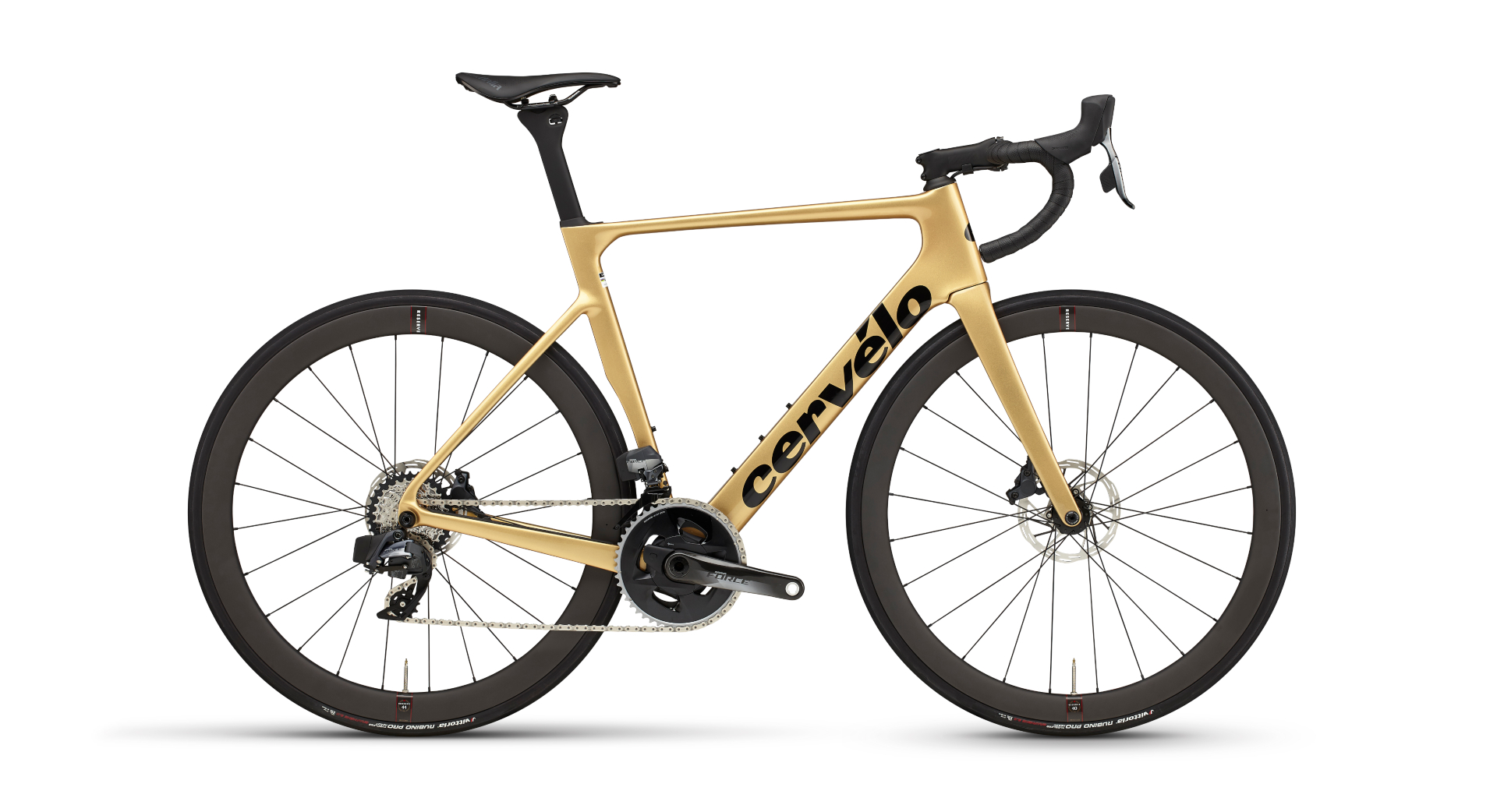Cervélo Soloist: the original aero road bike comes back as an affordable racer
Lighter than the S5, more aerodynamic than the R5 and quite a lot cheaper than both

For those of a certain vintage the return of the Soloist is likely to trigger a trip down memory lane. Back in the early 2000s it was the bike that many people credit with starting the modern aero revolution, with its extruded aerofoil tubes developed by the National Advisory Committee for Aeronautics no less, the first of their kind.

Cervélo famously started as an underfunded uni project but thanks to Team CSC the Canadian brand received plenty of racing exposure, with the likes of the Schleck brothers, Tyler Hamilton, Jens Voigt and Ivan Basso all riding the Soloist to victory on the WorldTour.
But the bicycle industry waits for no one, and by 2008 the Soloist was phased out, replaced by Cervélo’s S range. Still, its influence was profound and every modern aero race bike still has a little bit of the Soloist's DNA in its make-up.
So given the popularity, and proliferation, of wind-cheating, watt-saving race machines today, it’s little surprise that Cervélo has decided to bring it back. However, its aero credentials are only half the story of the Soloist’s comeback.

With Cervélo’s current road line-up featuring the Tour de France winning S5 and R5 as well as the endurance-focused Caledonia 5, which niche would the Soloist now serve, especially given the enhanced aerodynamics of the latest S5?
Interestingly, Cervélo has chosen to position the new Soloist as an affordable, and practical, bike for what it calls the “week in, week out amateur racer.” It claims that it’s a touch lighter than the S5 and significantly more aerodynamic than the R5, although it doesn't provide any numbers to substantiate this.
It’s clear that it borrows from all three road bikes currently in its line up, though. The geometry is similar to that of the R5, known for its precise and responsive handling as much as its low weight. A size 54 Soloist has a stack height of 540mm, a head tube angle of 73 degrees, chainstays measuring 410mm and a wheelbase of 977mm - which match those of the R5 (the stack on the R5 is .7mm higher) and suggest a bike that should be equally as well balanced in its handling.
The latest race content, interviews, features, reviews and expert buying guides, direct to your inbox!

Naturally, being a Soloist there’s plenty of attention to aerodynamics. The bike acknowledges its past as a drag-reducing trailblazer by keeping it pretty cutting edge. While the head tube area isn’t as extreme as the S5's, it’s still plenty deep. The tapered head tube also adopts the hourglass profile seen on both the S5 and the Caledonia 5.
In fact, there appears to be a few similarities to the latest Caledonia, including the dropped rear stays (which allow for up to 34mm tyres), the fork profile and the airfoil down tube. For further aero improvements it uses a triangle at the juncture of the top tube and seat tube, as do both the Caledonia and the S5.
The Soloist uses a two-piece bar and stem, with internal cable routing to keep the aero theme intact. But there’s more to the clean cockpit than simply hiding cables and hoses from the wind. By routing them under the stem but through the bearing cap it enables a stem swap to take place without having to bleed the brakes. Easier maintenance is the reason for the threaded BBrighT-47 bottom bracket too; Cervélo’s desire to make this a functional race bike for all means it's designed so it can be looked after with relative ease, and by riders who also do their own spannering.

While it's now a disc-only model, it is compatible with mechanical as well as electronic groupsets. This again ties in with the concept of a practical race bike for the amateur, where they can swap parts more easily as well as use components that don’t cost an arm and leg to replace.
The Soloist line up includes models featuring both Shimano 105 and Ultegra mechanical groupsets, something which is no longer offered for either the S5 or the R5. You can buy the Caledonia with cable operated gearing but the Soloist undercuts it by a few hundred pounds: the Soloist 105 retails for £3,000, while the Ultegra specced model costs £3,500. While I’d never try to convince anyone that this isn't still a large sum of money to spend on a bicycle, it does make the Soloist far more affordable than Cervélo's other race-focused offerings.

As for the electronic groupsets models, there’s something here for most, from Shimano 105 Di2 and SRAM Rival eTap AXS at the ‘lower’ end (£4,500 and £5,000 respectively) to Shimano Dura-Ace Di2 and SRAM Force Rival eTap AXS as the two most expensive models (£6,800 and £7,100 respectively).
For more information visit cervelo.com
Luke Friend has worked as a writer, editor and copywriter for over twenty five years. Across books, magazines and websites, he's covered a broad range of topics for a range of clients including Major League Baseball, Golf Digest, the National Trust and the NHS. He has an MA in Professional Writing from Falmouth University and is a qualified bicycle mechanic. He has been a cycling enthusiast from an early age, partly due to watching the Tour de France on TV. He's a keen follower of bike racing to this day as well as a regular road and gravel rider.